Moniek Bloks's Blog, page 19
March 30, 2025
Philippa of Guelders – Mary, Queen of Scots’ formidable great-grandmother (Part two
Philippa became dedicated to charity and religion. She and her husband were known for helping their people during the famine and an outbreak of the plague. She was also known for taking over the administrative tasks when her husband was away.
Tragedy struck in December 1508 when René died following a heavy cold. Philippa tried to become regent for her son, Antoine, who was 19 years old at the time. However, it was decided he was old enough to rule on his own. Philippa moved out of the ducal palace in Nancy to the Castle of Bar. She lived a modest life there, focussing on her children, charity and religion. In 1513, she was joined in Bar by Antoinette de Bourbon, who had married her son Claude that same year. They lived together until 1519. She was present at the birth of their daughter Marie in 1515.1 They were also joined by Renée de Bourbon, who had married her son Antoine.2
By 1519, Philippa had decided to spend whatever remained of her life at the Convent of Poor Clares of Pont-à-Mousson. She informed her children who were very surprised as the Poor Clares lived in poverty and asked her to go to a less strict convent. She refused and entered the convent on 19 December 1519. During the solemn ceremony, she changed into a simple habit, had her hair cut, was veiled and was given a cord for around her habit.3
Despite the strict rules of the convent, Philippa kept in touch with the outside world. She had several servants and corresponded with family through the convent’s secretary. She even received a letter from Pope Leo X telling her how glad he was that she had joined the convent.4 She also received a visit from Emperor Charles V, who was also aspiring to retire to a convent.5
When her sons Claude and Antoine visited her on their way to deal with a peasant horde, she reaffirmed her religious devotion and told them, “Do not recoil now that the occasion presents itself to die gloriously for Him, who with the infamy and opprobrium of the world upon him, died on the cross for you… Hurry yourselves… and against all who oppose you with arms strike, chop and cut… Do not fear to be cruel… Heresy is of the nature of gangrene; it will spread over the whole country if one does not confront it with fire and steel.”6
Her brother Charles died in 1538 without leaving any issue.
Philippa was often ill during her years at the convent, but her first serious illness did not show up until 1540. Fearing the worst, her family was called to her, but she recovered. Philippa met Christina of Denmark shortly after Christina married her grandson, Francis, in 1541. Her great-granddaughter Mary, Queen of Scots, was born on 8 December 1542.
Her health became worse from 1545, and she completely withdrew from life. She died on 26 February 1547. While ailing, she asked what day it was, and when told it was a Saturday, she reportedly said, “All the best things of my life came to me on this day. I was born and married to my dear husband on a Saturday. I entered Nancy amid the rejoicings of my people, and I forsook the world to take the veil on this day, and now, on Saturday, I am going to God.”7
She had survived ten of her children. She requested a simple grave in the convent’s cemetery, and this monument still exists. Her sons wanted a more elaborate monument, and a tomb, ordered by Christina of Denmark, was placed in the chapel of the convent. This marker is now in the Cordeliers Convent.8
The post Philippa of Guelders – Mary, Queen of Scots’ formidable great-grandmother (Part two appeared first on History of Royal Women.
March 29, 2025
Book News Week 14
Book News Week 14 – 31 March – 6 April 2025
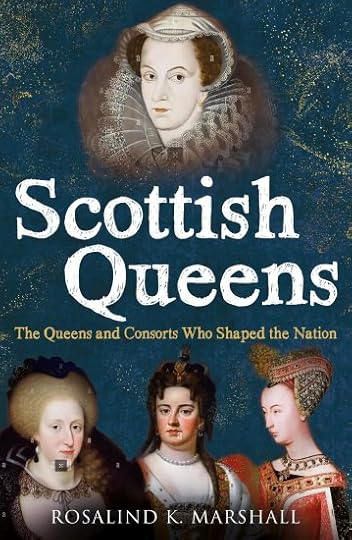
Scottish Queens: The Queens and Consorts Who Shaped the Nation
Mass Market Paperback – 3 April 2025 (UK)

The Boleyns of Blickling: From plough to crown in 100 years
Paperback – 31 March 2025 (UK)
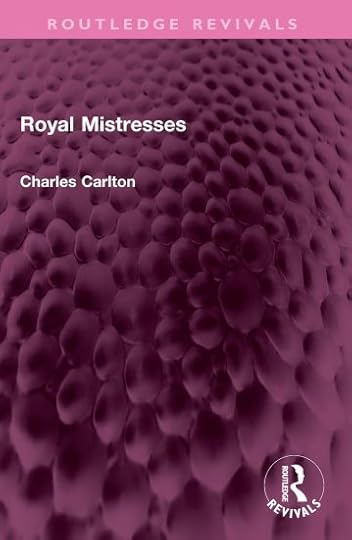
Royal Mistresses (Routledge Revivals)
Paperback – 31 March 2025 (US & UK)
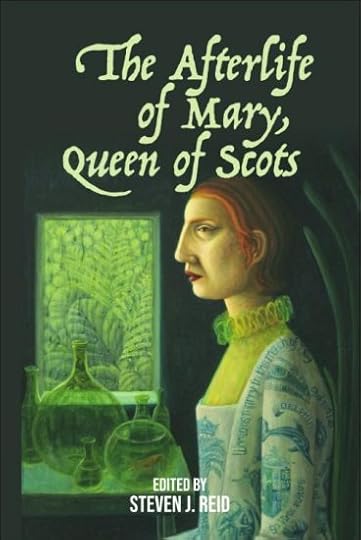
The Afterlife of Mary, Queen of Scots
Paperback – 31 March 2025 (US)
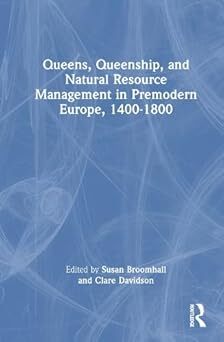
Queens, Queenship, and Natural Resource Management in Premodern Europe, 1400-1800
Paperback – 31 March 2025 (US & UK)
The post Book News Week 14 appeared first on History of Royal Women.
March 28, 2025
Philippa of Guelders – Mary, Queen of Scots’ formidable great-grandmother (Part one)
Philippa of Guelders was born in 1465 as the daughter of Adolf, Duke of Guelders and Catherine of Bourbon.
It had long been assumed that she was the twin of her brother Charles, born on 9 November 1467, but this seems to be without any source. According to an article by Pauline Zwetheul, it seems that Philippa was born on a Friday in March 1465 in Brussels. This would make her Charles’ older sister rather than his twin sister.1 Her godfather was Philip the Good, Duke of Burgundy and she was known as Philippe at the Burgundian court. Philippa was cared for by a wet nurse named Gerritken Biesmans.2
By September 1466, Philippa and her mother followed Adolf to the city of Grave. The following year, they visited the Burgundian court in Brussels. A few weeks later, Catherine had dinner with her niece, Mary of Burgundy, in Ghent, who gifted her a bag of toys, presumably for Philippa.3 She was only just pregnant with Charles, who would be born that November.
Catherine was in Nijmegen when she died after a sickbed of just a few months on 21 May 1469. Philippa and Charles were still very young, and they were entrusted to the care of Adolf’s unmarried sister, Catherine of Guelders. At the time, Adolf was involved in unrest in the duchy after he had imprisoned his father.
In 1473, Nijmegen was captured by Charles the Bold, Duke of Burgundy, and Philippa and Charles were taken into his care. He was their uncle, and they were brought to Ghent. Charles the Bold had remarried Margaret of York in 1468, and she would now oversee their care and education. Philippa grew up alongside Charles the Bold’s daughter, Mary of Burgundy, who was eight years younger, and she eventually became Mary’s lady-in-waiting. When Mary married the future Holy Roman Emperor Maximilian I on 19 August 1477, Charles and Philippa held candles during the ceremony. 4
Tragically, Mary died in 1482 following a horseriding accident. Philippa was one of those in the funeral procession. Shortly after this, Philippa left for the French court, leaving her brother Charles behind. At the time, Anne of France was regent of France for her minor brother, King Charles VIII. Anne now became responsible for the care of Philippa, just as she was for many noble children. Philippa was related to Anne as well. Anne’s husband, Peter, was her mother’s older brother.
With all these family connections, Philippa was considered to be an attractive candidate for marriage. Her future husband was René II, Duke of Lorraine. He had previously been married to Jeanne d’Harcourt, but they had remained childless. Their marriage was annulled without papal approval in 1485, and René asked Anne for Philippa’s hand in marriage. This seems to have been agreeable to Anne as Philippa and René were married on 1 September 1485 in Orléans. 5 However, the family of Jeanne was quite unhappy with this news, and they turned to Pope Innocent VIII. He officially annulled René’s first marriage in 1489, although the jilted Jeanne had died in 1488.
Philippa requested a second wedding ceremony, which took place in December 1488.6 By then, she and René had already had two sons, Charles and François, who both died in infancy. They would go on to have a total of 12 children, of which five sons would survive to adulthood. The family settled in the ducal palace in Nancy, but as was the custom, the court was often on the move.
Part two coming soon.
The post Philippa of Guelders – Mary, Queen of Scots’ formidable great-grandmother (Part one) appeared first on History of Royal Women.
March 27, 2025
The Danish Floral Aigrette Tiara
The Danish Floral Aigrette Tiara is a versatile piece in the collection of the Danish royal family.
The tiara dates from the 1950s and can be broken down into three sections, allowing it to be worn in all sorts of ways. It was previously owned by Lauritz Melchior, whose wife was photographed wearing it in the 1960s.
Embed from Getty ImagesIt was bought by King Frederik IX of Denmark in 1963 for his wife, Queen Ingrid. She wore it at the wedding of her daughter Princess Margrethe to Henri Laborde de Monpezat in 1967. She wore it often before gifting it to Margrethe in 1985.
Embed from Getty ImagesEmbed from Getty ImagesEmbed from Getty ImagesMargrethe has worn it often and in many different ways.1
The post The Danish Floral Aigrette Tiara appeared first on History of Royal Women.
March 25, 2025
Ten years of the Succession to the Crown Act 2013
The Succession to the Crown Act 2013 went into effect on 26 March 2015, marking the end of many years of male-preference primogeniture.
Before this Act, the succession was settled on Sophia of Hanover and the “heirs of her body” with the Act of Settlement of 1701. Per common law, this implied male-preference primogeniture. This meant that there was never a woman who was heir apparent to the throne. As they could always technically be replaced by a younger brother, they were only ever heir presumptive.1
The Act of Settlement also disqualified anyone from the line of succession who was or became a Catholic and removed those who married Catholics. This meant that Prince of Michael, who married Baroness Marie-Christine von Reibnitz in 1978, was removed from the line of succession. He was 15th in the line of succession at the time. The future King Willem-Alexander of the Netherlands, who married Máxima Zorreguieta in 2002, was also removed from the British line of succession, even though he had only been distantly in line as a descendant of King George II.
While the ban on being a Catholic continues under the Succession to the Crown Act 2013 act, the ban on marrying one was revised, and those who had previously been removed, such as Prince Michael of Kent and King Willem-Alexander, were restored to the line of succession.
The Act of Settlement also repealed the Royal Marriages Act 1772, which required descendants of “King George II, male or female, other than the issue of princesses who had married or might thereafter marry ‘into foreign families’, could marry without the consent of the reigning monarch.” This requirement is now limited to the first six people in the line of succession.
Most significantly, the Succession to the Crown Act 2013 no longer gave precedence to brothers over elder sisters in the line of succession. This applies only to men born after 28 October 2011. The first people to switch places in the succession were the children of Lady Davina Windsor (Lady Davina Lewis between 2004 and 2018), the elder daughter of the Duke and Duchess of Gloucester. Her daughter Senna was born in 2010, and her son Tāne in 2012. They were reversed and became 28th and 29th (at the time). When Prince Louis of Wales was born in 2018, he took up his place in the line of succession behind his elder sister, Princess Charlotte.
A statement made by Nick Clegg reads, “The Act reflects this Government’s emphasis on equality by removing centuries of discrimination on both religious and gender grounds. The Act puts in place succession laws that are fit for the 21st century and for a modern constitutional monarchy.”2
The post Ten years of the Succession to the Crown Act 2013 appeared first on History of Royal Women.
March 23, 2025
Grand Princess Liu Piao – The most powerful Princess of the Western Han Dynasty
Grand Princess Liu Piao was the daughter of Emperor Wen and Empress Dowager Dou Yifang of the Western Han Dynasty. She was also the mother of the deposed Empress Chen Jiao. However, she wielded immense power and influence in the Western Han Dynasty.[1] She helped Emperor Wu ascend to the Western Han throne. Yet, she also enjoyed tremendous freedom in her personal life.[2]
In circa 190 B.C.E., Grand Princess Liu Piao was born. She was the daughter of Emperor Wen of the Western Han Dynasty and Empress Dowager Dou Yifang. She was also the elder sister of the future Emperor Jing. Liu Piao was eventually granted the title of Princess of Guantao.[3] She married Chen Wu, the grandson of Chen Ying (the Marquis of Tangyi). She gave birth to three children.[4] One of them was Chen Jiao, who was born circa 165 B.C.E.[5]
During Emperor Jing’s reign, Princess Liu Piao was given the privilege of freely arriving and leaving the palace whenever she wished.[6] This allowed her daughter, Chen Jiao, to grow up alongside her cousin, Prince Liu Che (the future Emperor Wu of Han).[7] Princess Liu Piao was very ambitious and wanted Chen Jiao to become the next Empress.[8] When Prince Liu Rong was promoted to Crown Prince, Princess Liu Piao hoped that he would marry her daughter.[9] However, his mother, Imperial Concubine Li, refused to marry her son to Chen Jiao.[10] Concubine Li’s refusal deeply hurt Princess Liu Piao.[11] She turned to Imperial Consort Wang Zhi, who agreed to let her son, Prince Liu Che, marry Chen Jiao.[12] Princess Liu Piao began to speak ill of Imperial Concubine Li in front of Emperor Jing and began praising Imperial Consort Wang Zhi’s son, Liu Che.[13]
Gradually, Emperor Jing began to dislike Imperial Concubine Li and became more fond of Prince Liu Che.[14] He began to consider removing Liu Rong from the Crown Prince position.[15] In order to eliminate Imperial Concubine Li, Grand Princess Piao then persuaded the ministers to submit a formal memorial requesting Imperial Concubine Li to be promoted to the Empress position.[16] This petition enraged Emperor Jing.[17] He removed Liu Rong from the Crown Prince position.[18] He made Liu Che the Crown Prince, and Imperial Consort Wang Zhi was invested as Empress.[19] Grand Princess Liu Piao was extremely happy because her daughter, Chen Jiao, would become the next Empress of China.[20]
On 9 March 141 B.C.E., Liu Che ascended the throne as Emperor Wu of Han. He made Chen Jiao his Empress. Their marriage was initially happy, and Emperor Wu loved her deeply.[21] After ten years of marriage, Empress Chen Jiao still remained barren.[22] Her barrenness caused Emperor Wu to stop visiting her, and he turned his attention to other women.[23] This made Empress Chen very jealous and overbearing which caused her to gradually lose Emperor Wu’s love.[24] Emperor Wu’s favourite imperial consort was Wei Zifu.[25]
In 130 B.C.E., Empress Chen Jiao hired a witch named Chu Fu to kill Imperial Consort Wei Zifu.[26] When Emperor Wu learned of what his Empress had done, he executed 300 people who practised sorcery and witchcraft, including Chu Fu.[27] On 20 August 130 B.C.E., Emperor Wu officially deposed Empress Chen Jiao and banished her to Changmen Palace.[28] Princess Liu Piao tried to get her daughter reinstated, but Emperor Wu refused to listen to her.[29] He told her that the deposed Empress was living in comfort.[30] Princess Liu Piao realized that there was nothing more she could do for her daughter and became silent on the issue.[31]
Shortly after Empress Chen Jiao’s deposition, Princess Liu Piao’s husband, Chen Wu, died of illness.[32] When Princess Liu Piao was in her fifties, she had a secret liaison with her servant named Dong Yan.[33] Dong Yan’s close friend, Yuan Shu, warned Dong Yan that he was committing a crime by having a secret liaison with Princess Liu Piao.[34] Yuan Shu then suggested that Princess Liu Piao should offer Emperor Wu the Changmen Gardens as a precaution.[35] Princess Liu Piao decided it was time for Emperor Wu to meet her lover, Dong Yan.[36] She pretended to be ill, and Emperor Wu came to visit her.[37] When she recovered from her fake illness, Emperor Wu hosted a lavish feast for her.[38]
A few days after the banquet, Emperor Wu visited her residence again.[39] Princess Liu Piao dressed as a commoner when Emperor Wu asked to see her lover, Dong Yan.[40] She took off all her fine jewellery, shoes, and ornaments for her hair and begged for forgiveness for taking a lover.[41] After Emperor Wu pardoned her, she quickly put on all her jewellery, shoes, and ornaments.[42] Then, she fetched Dong Yan.[43] Dong Yan knelt and begged the Emperor for forgiveness.[44] Emperor Wu made Dong Yan a government official.[45] Princess Liu Piao then said that she and Dong Yan would send the generals and marquises who were present at the banquet to be rewarded with gifts and money.[46] Her statement earned Dong Yan Emperor Wu’s favour.[47] Dong Yan often accompanied Emperor Wu on his pleasure outings.[48] Emperor Wu hosted another banquet for Princess Liu Piao and permitted Dong Yan to attend.[49]
One day, the Grand Master of the Palace, Dongfang Shuo, stopped Emperor Wu and persuaded him to stop seeing Dong Yan because of his illicit relations with Princess Liu Piao.[50] He said that by associating with Dong Yan, Emperor Wu would be encouraged to lead a debauched life.[51] Dongfang Shuo’s words led Emperor Wu to lose interest in Dong Yan.[52] Dong Yan died shortly afterwards of illness at the age of thirty.[53] Emperor Wu made Liu Piao the Grand Princess.[54] In 116 B.C.E., Grand Princess Liu Piao died. Grand Princess Liu Piao chose not to be buried beside her husband, Chen Wu.[55] Instead, she chose to be buried next to her lover, Dong Yan, in Baling.[56]
During Emperor Jing’s reign, Grand Princess Liu Piao was a major political player.[57] Through her manipulation, she deposed one Crown Prince and installed a new one that suited her ambitions.[58] Her only failure was that her dream of her daughter, Chen Jiao, becoming Empress had come to a tragic end.[59] However, she did have the freedom to flaunt her lover openly and chose to be buried beside him.[60]It is no wonder why she enjoyed the tremendous power and influence that few princesses in Chinese history ever wielded.[61]
Sources:
Bao S. (2015). “Liu Piao, the Grand Princess”. Biographical Dictionary of Chinese Women: Antiquity Through Sui, 1600 B.C.E. – 618 C.E. (L. X. H. Lee, Ed.; A. D. Stefanowska, Ed.; S. Wiles, Ed.). NY: Routledge. pp. 165-168.
iMedia. (n.d.) “The first eldest princess of the Han Dynasty did not want to have the same cave with her husband after death, and requested to be buried with her lover”. Retrieved on 24 October 2024 from https://min.news/en/history/a082126c8....
Wang, L. (2015). “Chen Jiao, Empress of Emperor Wu”. Biographical Dictionary of Chinese Women: Antiquity Through Sui, 1600 B.C.E. – 618 C.E. (L. X. H. Lee, Ed.; A. D. Stefanowska, Ed.; S. Wiles, Ed.). NY: Routledge. pp. 114-115.
iNews. (n.d.). “Chen Ajiao is so proud of being pampered she can’t buy a gift for her daughter to exchange it for Emperor Wu of the Han Dynasty.”. Retrieved on 9 October 2023 from https://inf.news/en/history/cba283a29....
[1] Bao, 2015
[2] Bao, 2015
[3] Bao, 2015
[4] iMedia, n.d., “The first eldest princess of the Han Dynasty did not want to have the same cave with her husband after death, and requested to be buried with her lover”
[5] Bao, 2015
[6] Bao, 2015
[7] Bao, 2015
[8] iMedia, n.d., “The first eldest princess of the Han Dynasty did not want to have the same cave with her husband after death, and requested to be buried with her lover”
[9] Bao, 2015
[10] iMedia, n.d., “The first eldest princess of the Han Dynasty did not want to have the same cave with her husband after death, and requested to be buried with her lover”
[11] Bao, 2015
[12] Bao, 2015
[13] Bao, 2015
[14] Bao, 2015
[15] Bao, 2015
[16] Bao, 2015
[17] Bao, 2015
[18] Bao, 2015
[19] Bao, 2015
[20] Bao, 2015
[21] Wang, 2015
[22] Wang, 2015
[23] Wang, 2015; iNews, n.d., “Chen Ajiao is so proud of being pampered, she can’t buy a gift for her daughter to exchange it for Emperor Wu of the Han Dynasty.”
[24] Wang, 2015
[25] Bao, 2015
[26] Wang, 2015
[27] Wang, 2015; iNews, n.d., “Chen Ajiao is so proud of being pampered, she can’t buy a gift for her daughter to exchange it for Emperor Wu of the Han Dynasty.”
[28] Wang, 2015; iNews, n.d., “Chen Ajiao is so proud of being pampered, she can’t buy a gift for her daughter to exchange it for Emperor Wu of the Han Dynasty.”
[29] Bao, 2015
[30] Bao, 2015
[31] Bao, 2015; iMedia, n.d., “The first eldest princess of the Han Dynasty did not want to have the same cave with her husband after death, and requested to be buried with her lover”
[32] iMedia, n.d., “The first eldest princess of the Han Dynasty did not want to have the same cave with her husband after death, and requested to be buried with her lover”
[33] Bao, 2015
[34] Bao, 2015
[35] Bao, 2015
[36] Bao, 2015
[37] Bao, 2015
[38] Bao, 2015
[39] Bao, 2015
[40] Bao, 2015
[41] Bao, 2015
[42] Bao, 2015
[43] Bao, 2015
[44] Bao, 2015
[45] Bao, 2015
[46] Bao, 2015
[47] Bao, 2015
[48] Bao, 2015
[49] Bao, 2015
[50] Bao, 2015
[51] Bao, 2015
[52] Bao, 2015
[53] iMedia, n.d., “The first eldest princess of the Han Dynasty did not want to have the same cave with her husband after death, and requested to be buried with her lover”
[54] Bao, 2015
[55] iMedia, n.d., “The first eldest princess of the Han Dynasty did not want to have the same cave with her husband after death, and requested to be buried with her lover”
[56] Bao, 2015; iMedia, n.d., “The first eldest princess of the Han Dynasty did not want to have the same cave with her husband after death, and requested to be buried with her lover”
[57] Bao, 2015
[58] Bao, 2015
[59] iMedia, n.d., “The first eldest princess of the Han Dynasty did not want to have the same cave with her husband after death, and requested to be buried with her lover”
[60] Bao, 2015; iMedia, n.d., “The first eldest princess of the Han Dynasty did not want to have the same cave with her husband after death, and requested to be buried with her lover”
[61] Bao, 2015
The post Grand Princess Liu Piao – The most powerful Princess of the Western Han Dynasty appeared first on History of Royal Women.
March 22, 2025
A look at the life of Princess Eugenie
Princess Eugenie of York was born on 23 March 1990 as the second daughter of The Duke and Duchess of York.
The New York Times reported, “The Duchess of York gave birth to a 7-pound-1 1/2 ounce daughter by Caesarian section last night at Portland Hospital in London. Both mother – often known in the tabloid as Fergie, after her maiden name, Sarah Ferguson – and baby were doing well. The baby has no name yet but will be known as Her Royal Highness Princess (fill in her first name here when she has one) of York.”2
Embed from Getty ImagesEmbed from Getty ImagesAt the time of her birth, she was sixth in the line of succession. However, as a girl, she (and her elder sister Beatrice) is not in line to inherit her father’s dukedom. She was the sixth grandchild of Queen Elizabeth II and Prince Philip, Duke of Edinburgh. On 23 December 1990, she was baptised Eugenie Victoria Helena at St Mary Magdalene Church at Sandringham. She was just six years old when her parents divorced, although they had already been separated for a while. Her parents had joint custody. In her youth, she had a curvature of the spine, and she underwent back surgery at the Royal National Orthopaedic Hospital in London.
Embed from Getty ImagesEmbed from Getty ImagesEmbed from Getty ImagesPrincess Eugenie attended the Winkfield Montessori from 1992 to 1993. She then joined her sister Beatrice at Upton House School in Windsor until 1995. From 1995 until 2001, she attended Upton House School. From 2001 until 2003, she attended St George’s School. She then became a boarder at Marlborough College in Wiltshire until 2008. After completing her A-Levels, she took a gap year before heading to Newcastle University in 2009. She graduated in 2012 with a 2:1 degree in English Literature and History of Art.
Embed from Getty ImagesShe briefly lived in New York for work before moving back to London to work at Hauser & Wirth art gallery.
Embed from Getty ImagesOn 22 January 2018, Buckingham Palace announced the engagement of Princess Eugenie and Jack Brooksbank. They had been dating since 2011. They were married on 12 October 2018 at St George’s Chapel, Windsor Castle. Her wedding dress was specifically designed to show her scoliosis scar.
Embed from Getty ImagesEmbed from Getty ImagesOn 9 February 2021, Princess Eugenie gave birth to her first child, a son named August. A second son named Ernest was born on 30 May 2023.
Embed from Getty ImagesPrincess Eugenie occasionally undertakes royal duties, usually in connection with charities she supports.
The post A look at the life of Princess Eugenie appeared first on History of Royal Women.
The Year of Queen Sālote Tupou III – Travelling to the UK for Queen Elizabeth II’s Coronation
Queen Sālote Tupou III of Tonga had always admired the United Kingdom, and she was grateful for the protection they had given Tonga. She received several British honours, and she was an Honorary Dame Grand Cross of the Order of St Michael and St George, Honorary Dame Grand Cross of the Royal Victorian Order, Honorary Dame Grand Cross of the Order of the British Empire and Honorary Dame Grand Cross of the Order of St John. She got a chance to visit the United Kingdom when she received an invitation to the coronation of Queen Elizabeth II in 1953.
On 23 March 1953, Queen Sālote left Tonga onboard the Tofua as weeping crowds sang to her. They were fearful that they might never see her again. Queen Sālote, too, realised that there may be people in her life who might not be there when she returned after such a long journey. People had come to say goodbye at the palace before her departure, and she told the older people, “Now promise. No going before I return.”1
Queen Sālote detailed the long journey in her diary. She was delighted by everything she saw and was sometimes baffled by the cultural differences.2 The Tofua sailed via Vavu’u, Pago Pago (American Sāmoa), Apia (Western Sāmoa) and Suva to Auckland. In Auckland, she rested for ten days in her newly purchased residence, ‘Atalanga. On 18 April, she received a farewell from the New Zealand government as she sailed from Wellington on the Rangitoto.
During the trip, she landed on Pitcairn Island, but she did not disembark. Her first disembarkment took place in Panama on 4 May. She was welcomed there by the British Consul, and he entertained her for a day. As she sailed through the Panama Canal, she wrote, “There are no words adequate for praising or describing the Canal, or the wonder and the beauty of the work. I stood there without moving, marvelling at the energy that lay behind the great improvements in technology and communication among the peoples of the world. My heart warmed at the sight I beheld, and I gave thanks for the privilege of seeing this famous scene of this modern age.3
She was again entertained by the British Consul at Curaçao, and she had afternoon tea at the British Women’s Club. She later wrote, “It was a happy welcome that the British women gave us. The tea was good, and everything went well. Best of all were the hospitality and friendliness of these dear people.”4
England finally came into view on 17 May. An emotion Queen Sālote wrote, “Ah! How the emotions welled up in my heart, confusion mixed with excitement, nervousness, and feelings of anticipation. But these feelings were checked by the thought of my unworthiness, and my nervousness made me feel somewhat cold.”5
Embed from Getty ImagesHer ship docked in Southampton the following day. She was welcomed by James Scott Neil and Sir Arthur Bromley. The coronation was set to take place on 2 June.
The post The Year of Queen Sālote Tupou III – Travelling to the UK for Queen Elizabeth II’s Coronation appeared first on History of Royal Women.
Book News Week 13
Book News Week 13 – 24 March – 30 March 2025
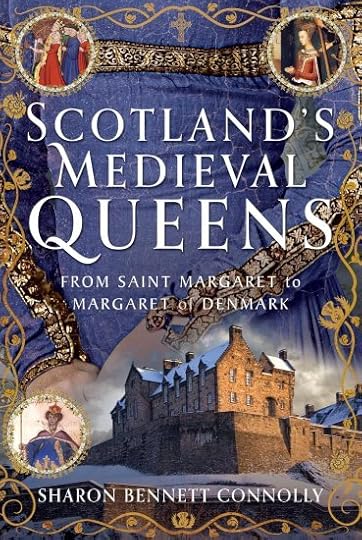
Scotland’s Medieval Queens: From Saint Margaret to Margaret of Denmark
Hardcover – 30 March 2025 (US)
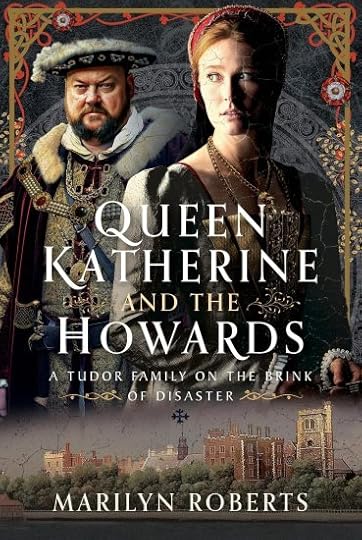
Queen Katherine and the Howards: A Tudor Family on the Brink of Disaster
Hardcover – 30 March 2025 (US)
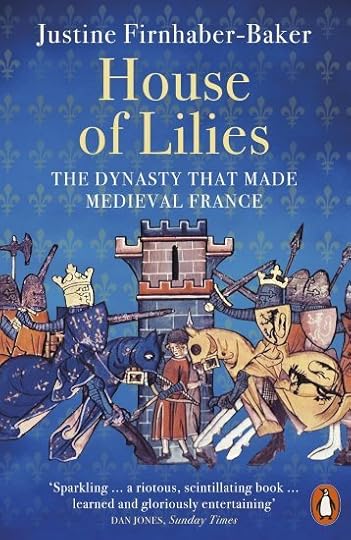
House of Lilies: The Dynasty that Made Medieval France
Paperback – 27 March 2025 (UK)
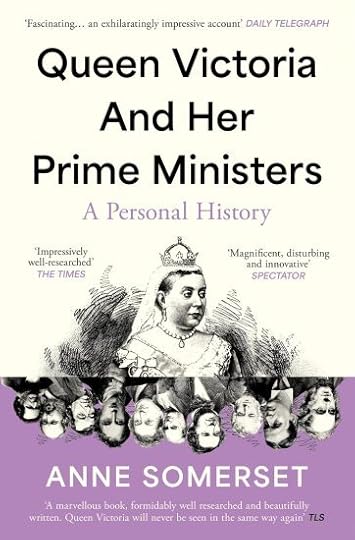
Queen Victoria and her Prime Ministers: A Personal History
Paperback – 27 March 2025 (UK)

Power and Glory: Elizabeth II and the Rebirth of Royalty
Paperback – 27 March 2025 (UK)
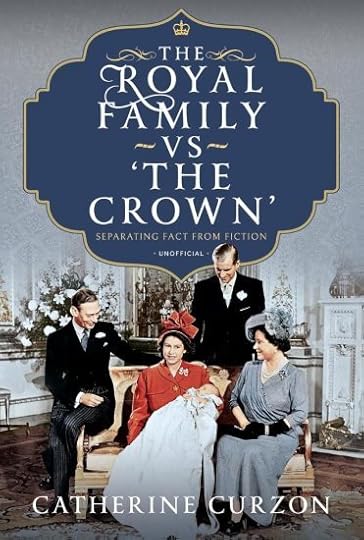
The Royal Family vs ‘The Crown’: Separating Fact from Fiction
Hardcover – 30 March 2025 (US)
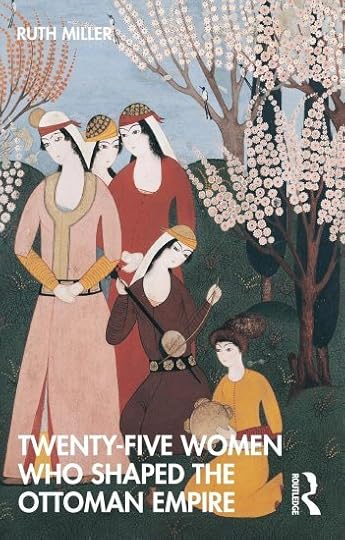
Twenty-Five Women Who Shaped the Ottoman Empire
Paperback – 26 March 2025 (US & UK)
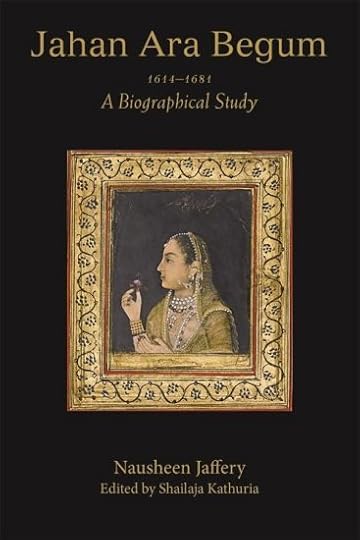 Version 1.0.0
Version 1.0.0Jahan Ara Begum 1614–1681: A Biographical Study
Hardcover – 25 March 2025 (US)
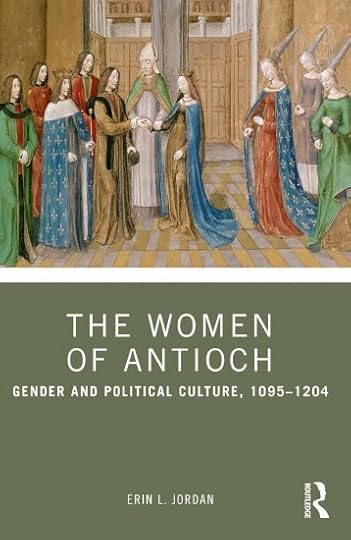
The Women of Antioch: Gender and Political Culture, 1095–1204
Paperback – 24 March 2025 (US & UK)
The post Book News Week 13 appeared first on History of Royal Women.
March 21, 2025
Natalie Dormer takes on third royal role in royal aide murder series
Natalie Dormer is set to portray her third real life royal woman in the new ITV royal aide murder series The Lady.
The four-part series will track the rise and fall of royal dresser Jane Andrews, who was convicted of murder. She was the Duchess of York’s dresser for nine years before she lost her job. The murder she was convicted of took place after she left the Duchess’s service.
Natalie Dormer will portray the Duchess of York. She previously played Queen Elizabeth The Queen Mother in the film W.E. and Anne Boleyn in the series The Tudors.
Helen Ziegler will oversee the production on behalf of ITV and ITVX.
A release date has not been set yet.
The post Natalie Dormer takes on third royal role in royal aide murder series appeared first on History of Royal Women.



